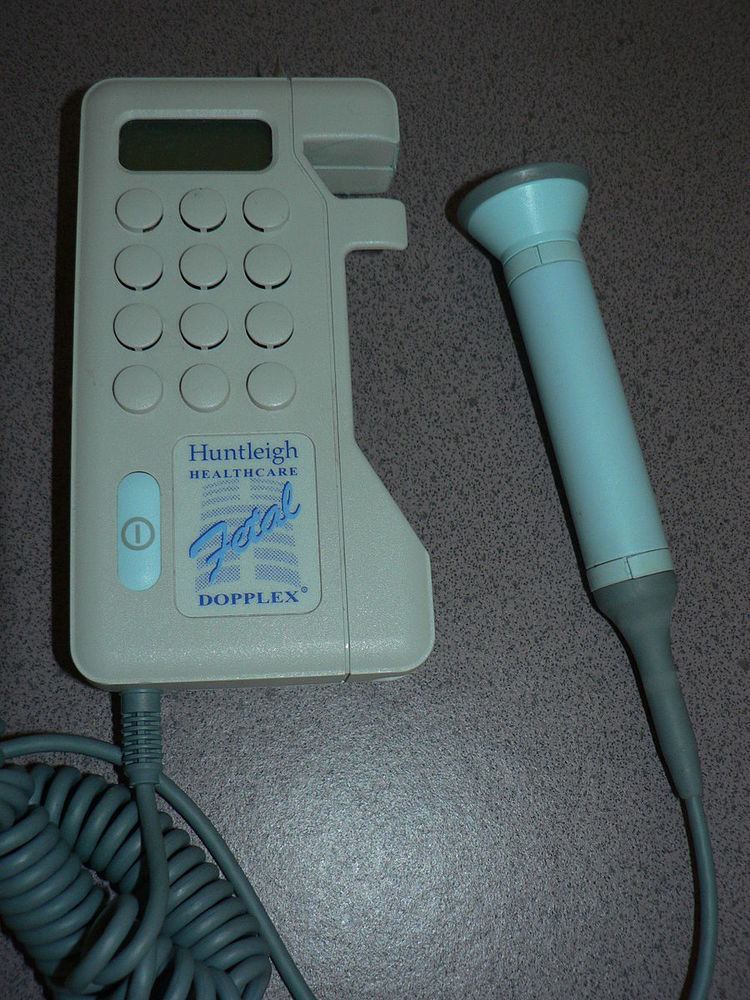 | ||
Doppler fetal monitor or Baby Heartbeat Monitors is a handheld ultrasound baby heartbeat monitor used to hear an embryo or fetus' heartbeat.
Contents
Originally intended for use by health care professionals, despite this, Fetal Doppler devices have become extremely popular for personal use.
History
Invented in 1958 by Dr. Edward H. Hon, a Fetal Doppler Monitors or Baby Heartbeat Monitors is a hand-held ultrasound transducer used to detect the fetal heartbeat for prenatal care. It uses the Doppler effect to provide an audible simulation of the heart beat. Some models also display the heart rate in beats per minute (BPM). Use of this monitor is sometimes known as Doppler auscultation. Doppler fetal monitors are commonly referred to simply as "Dopplers" or "Fetal Dopplers".
Doppler fetal monitors provide information about the fetus similar to that provided by a fetal stethoscope. One advantage of the Doppler fetal monitor over a (purely acoustic) fetal stethoscope is the electronic audio output, which allows people other than the user to hear the heartbeat. One disadvantage is the greater complexity and cost and the lower reliability of an electronic device.
Originally intended for use by health care professionals, this device is becoming popular for personal use.
Fetal Heart Rates
Starting at week 5 the fetal heart rate accelerates by 3.3 bpm per day for the next month.
The fetal heart begins to beat at approximately the same rate as the mother's, which is typically 80 to 85 bpm. The approximate fetal heart rate for weeks 5 to 9 (assuming a starting rate of 80):
At this point, the fetal heart rate begins to decrease, and generally falls within the range of 120 to 160 bpm by week 12.
Types
Dopplers for home or hospital use differ in the following ways:
A major advantage of being able to record and share the recording is that it can be emailed to a healthcare professional to be checked if there are any concerns about whether or not it is the baby's heart rate and whether or not is normal. Typically, they work from about 12 weeks.
The use of the word "Sonicaid" for Doppler fetal monitors comes from the products of the UK company Sonicaid Ltd. Sonicaid products included the D205/206 portable fetal Dopplers and FM2/3/4 series of fetal monitors. The company was acquired by Oxford Instruments in 1987 to form Oxford Sonicaid.
Doppler Auscultation in Adults
It was recently demonstrated that continuous Doppler enables the auscultation of valvular movements and blood flow sounds that are undetected during cardiac examination with a stethoscope in adults. The Doppler auscultation presented a sensitivity of 84% for the detection of aortic regurgitations while classic stethoscope auscultation presented a sensitivity of 58%. Moreover, Doppler auscultation was superior in the detection of impaired ventricular relaxation Since the physics of Doppler auscultation and classic auscultation are different, it has been suggested that both methods could complement each other.
